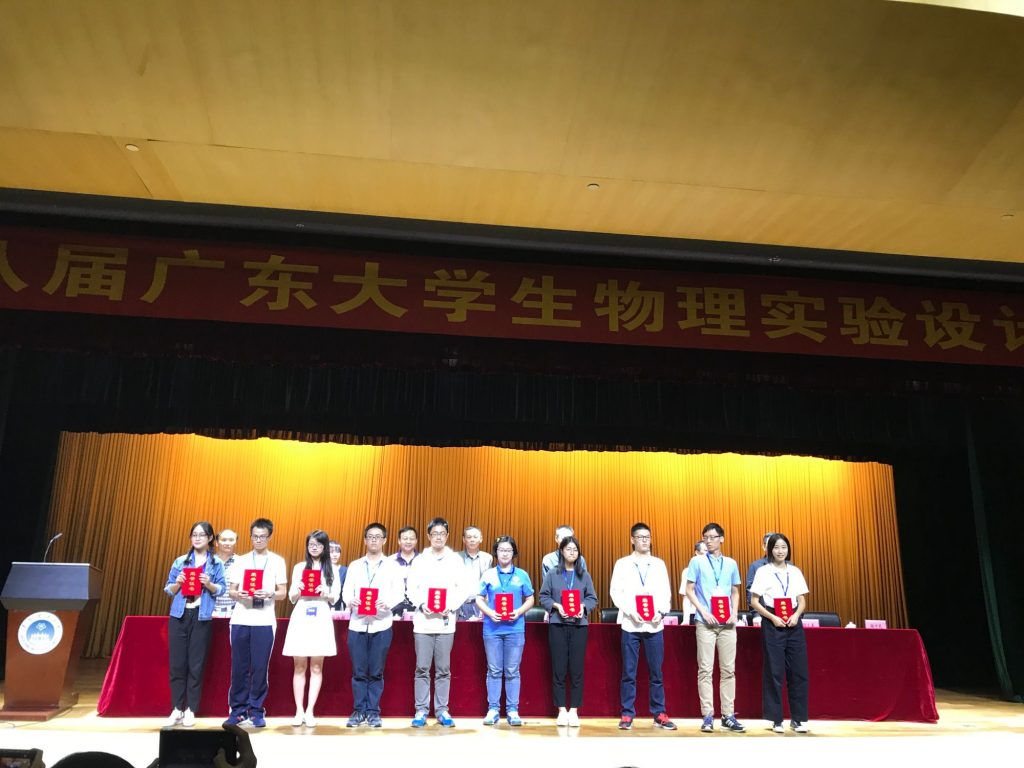

Under the guidance of physics teachers Wang Cailin, Yang Jun and Zeng Xiaoqi, two SUSTech teams entered the contest and performed very well in both the examination and presentations, despite fierce competition from other university teams. The students included 2016 undergraduates Liu Hao, Liu Yixuan, Sui Changxiang and Zhang Yuzhao who received the first prize for the Applied Problem group with their “Design of Magnetic Levitation Cart Based on YBCO High Temperature Superconducting Materials” project, which was selected as the “representative work” to be displayed at the conference. The other team was composed of 2015 undergraduates Zhou Chengjie, Cui Zhen, Zheng Huiyuan and Zhang Runnan who won second prize for the Basic Problem group with their “Air Refractive Index Gradient Visualization Experiment” project.
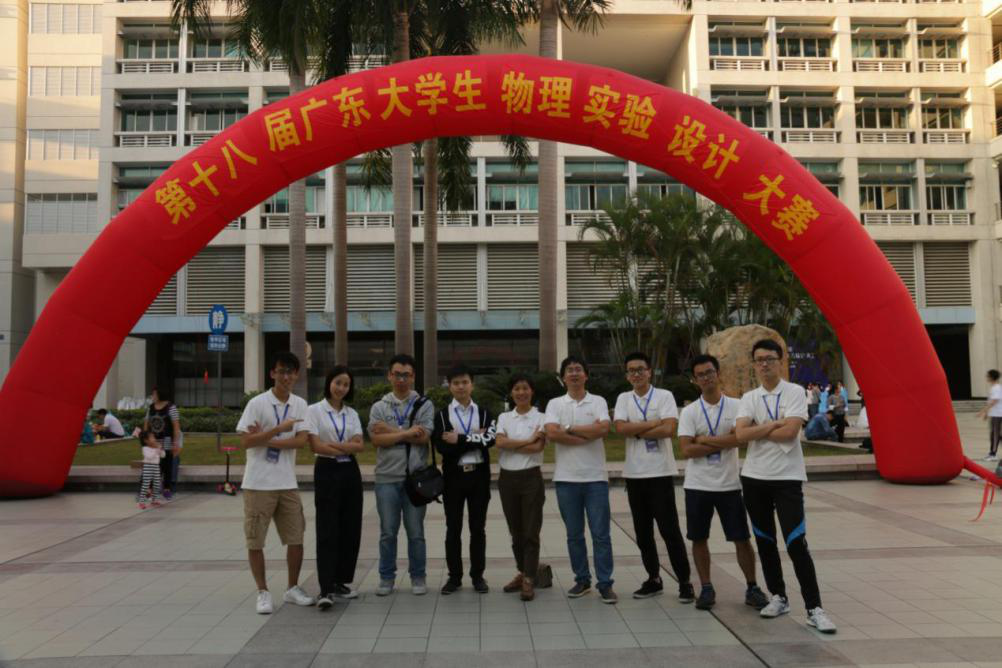
Sponsored by the Guangdong Association of Physics, the Guangdong University Physics Experiment Competition aims to cultivate students’ interest in physics and experiments, enhance students’ sense of innovation, and put to practice their theoretical knowledge. It is an important tradition for colleges and universities in Guangdong Province. This year is the fifth year in a row that SUSTech participates, and in the past four, the university won a total of two first prizes, four second prizes, and two third prizes.
Contributed by: Department of Physics
“Magnetic suspension car design based on YBCO high temperature superconducting material”

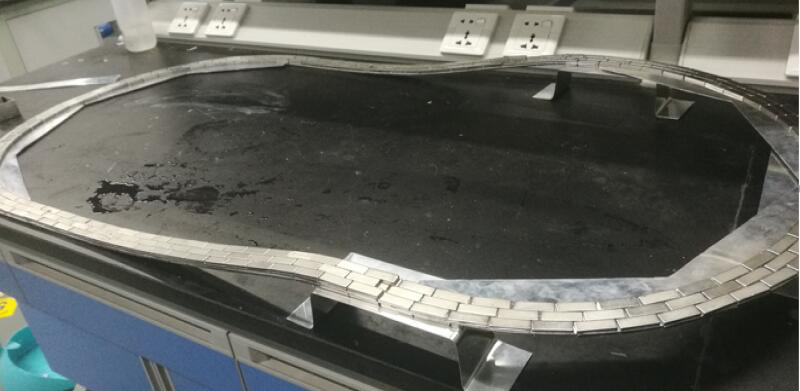
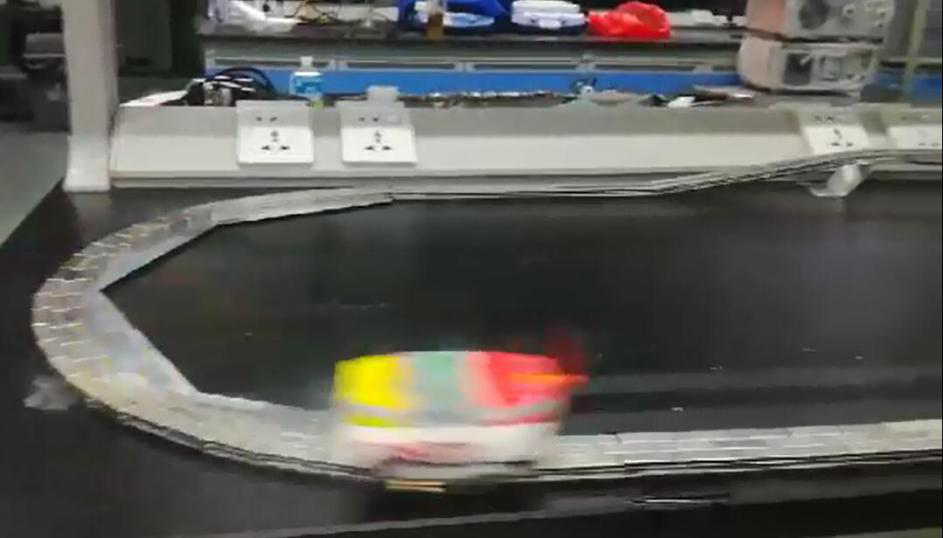
Ideal superconductivity has two characteristics: 1. resistance is close to zero; and 2. completely diamagnetic.
Ceramics YBa2Cu3O7-δ (abbreviated as: YBCO) at temperatures below 90K can achieve superconductivity, and with the use of liquid nitrogen temperatures of 77K characteristics, the YBCO placed in liquid nitrogen can be superconductive. The experimental design is mainly based on the complete anti-magnetic superconducting, the NdFeB permanent magnet in accordance with specific rules arranged in orbit, the YBCO superconducting placed above the track achieves a stable suspension, the use of a remote control device installed in the YBCO superconducting car on the track successfully achieves acceleration, deceleration, and stopping at the platform to simulate the operation of the subway.
“Air Refractive Index Gradient Visualization Experiment”

The stripe method is a practical method that can convert the refractive index change of transparent medium into a striated image with changing light intensity so as to visualize the change of the refractive index. Through the selection of small-scale light sources and long focal length lens, In this paper, the laser calibration is used to improve the sensitivity of the lithography system to obtain a visual grain map of the refractive index gradient of the air. The temperature and the flow rate are quantitatively studied and compared with the computer simulation results. Through the analysis and study of this shadow system, we can see the great application prospect of the future shadow system in the fields of national defense and so on.
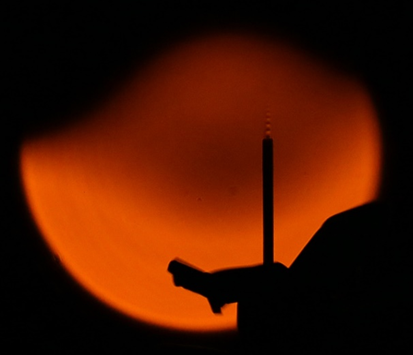
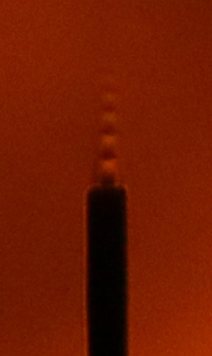
Proofread By
Photo By